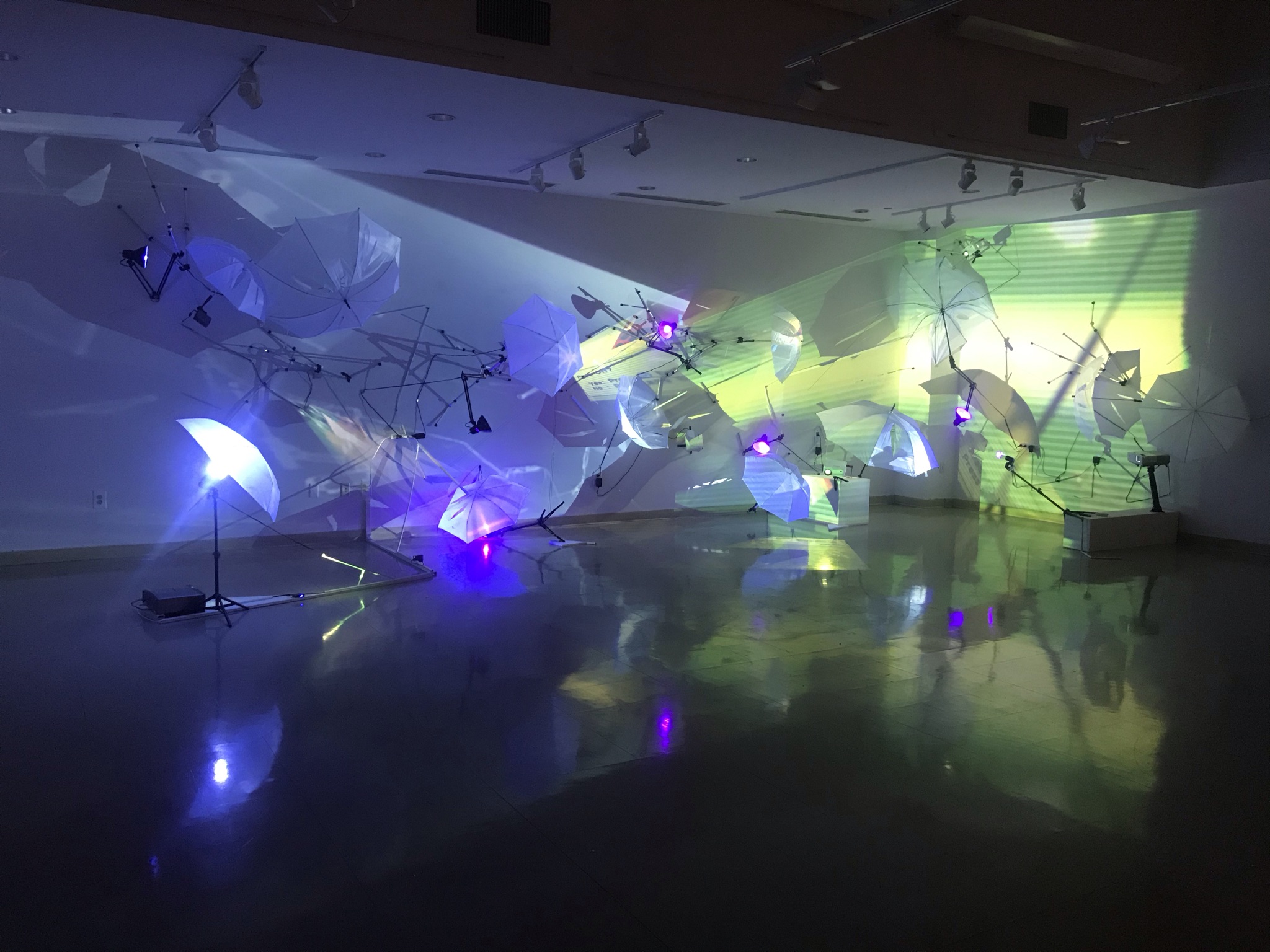an installation by Gianluca Bianchino
All frequencies are open.
We use digital media to bridge the gap of physical space between us. It can be awkward, clumsy, unsatisfying, exhausting, or comical – just like every other means of communication. But as we have learned, our human needs and expectations too often exceed the capabilities of our technology. These technologies seem only to advance other technologies, not human proximity.
Gianluca Bianchino imagines a world of fragile, broken robots conversing with each other in a realm where humans are distant, mute observers, wondering what is real.
Curatorial Statement: Crossing the Uncanny Valley
In aesthetics, the uncanny valley is the gulf between our experience of say, an android that is made as human-like as possible, and a live human being, along with the degree of weirdness we feel when we see it in action. It is the distance (and cognitive dissonance) between the virtual and the real. Under COVID, together we have set out across this chasm, taking in the scenery along the way. Many of us have traveled much farther than we ever imagined we would. It feels like every space we used to experience only in the real world has become a hybrid space, at the very least, or a fully virtual one with both a geographical location (available through Google Earth) and a virtual one with a unique IP address.
As the pandemic took hold, gallery and museum curators around the world have been challenged to think of ways to present art in a completely online environment. If anything, artists and curators have been imaginative and energetic in trying to solve this. Could it work? Would it be a satisfying experience? We made websites, uploaded images, and experimented with VR.
The results are mixed at best: Is there just too much online? Does the world need another online art website? Is there an asymptote for the number of images that can be uploaded before the whole enterprise is meaningless? Or are we too fatigued from staring at LED screens and too starved for in person interaction to want to see art in this way?
Gianluca Bianchino and I conceived of this exhibition to explore the borders of this strange live-space/virtual transition in which we find ourselves. The questions we explore is, “How is our concept of reality being transformed under our (virtual) feet?” And then, “What will it mean for our understanding of art?” It is an attempt to communicate with reality. An attempt. Because we don’t know if it will succeed.
We decided to create a work that would inhabit both Gallery Bergen’s otherwise closed West Hall location on Bergen Community College’s Paramus campus. Fittingly, perhaps, West Hall had been successively commandeered by FEMA and then Bergen County for public, county-wide drive-through COVID testing. The driving force behind our massive transition to virtual art realities was working away just downstairs from the gallery. In February, the college allowed us to activate the space and to create this installation. We added the virtual dimension with a Matterport 3D/VR camera that allowed us to create a fully navigable space online, punctuated with videos and sound. The website has both augmented reality and virtual reality components. It is realish. It is open for discussion, which is the point.
Gianluca’s sculptural installation work seemed perfect to me for this conversation. This, like previous iterations reference “space junk” – aging, outdated satellites limping along in their decaying orbits. (There are so many satellites of various kinds in earth orbit that they are getting in each other’s way, like derelict cars abandoned in the highway.) The fragility of the sculptures holds the contradiction of the seemingly inexorable momentum of our technologically-dominated lives and their impermanence and the evolving obsolescence of the technologies that birthed them. The umbrellas, some collapsed and distorted, signify the ephemeral – collectors for gathering communication signals or solar winds that can no longer produce a viable signal.
The projections and sound art speak as satellites might communicate with each other or their home base, with an overlayed translation into sound and speech that we might understand. They summon for us the feelings of excruciating loneliness of the two Voyager spacecraft now traveling beyond the bounds of our galaxy, heading for deep space, sending us coded messages across the millions of miles. They may continue doing so until their power sources finally die; they may continue even after there is no one left on earth to listen.
Back in the real world, of course, there are now over 3,372 satellites orbiting the earth, with the US responsible for 1897 of them. Of those, 221 are military satellites. Their uses are for surveillance, targeting, directing drone strikes, coordinating missile launches and trajectories – the infrastructure for vast destruction. But these, too, are launched, they have a lifespan, their orbits decay, they fall and are consumed in earth’s atmosphere. This ephemerality is realized in Gianluca’s sculptures. There is nothing menacing about them. They are gossamer parasols like those children might carry to protect themselves from the sun or the monsoon rains. They seem aware of their own mortality.
As we traverse the uncanny valley into the virtual, we are aware that we, too, are on a journey that will change us as artists and as people, just as in 1839 photography changed everything. This feels like a similar historical moment. Will we discover, as Picasso said of photography, that VR will free up art to do what it does best: explore the imagination? We shall see. For now, it seems, there is no going back.
Tim Blunk, Curator/Director, Gallery Bergen


